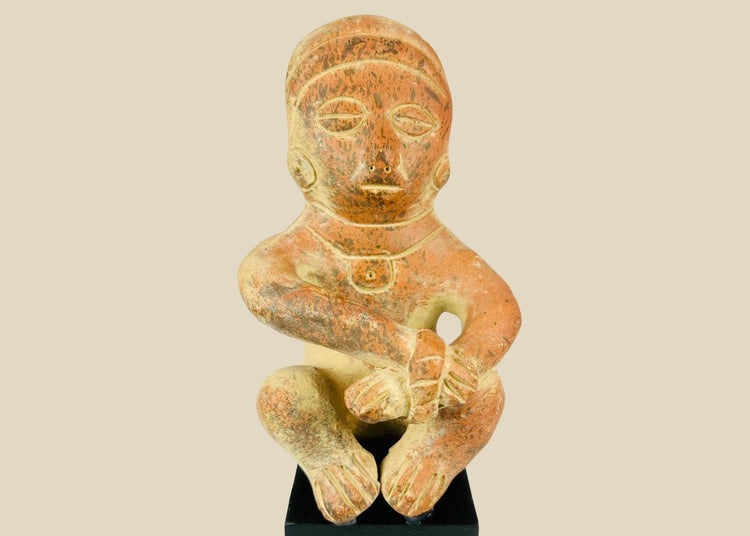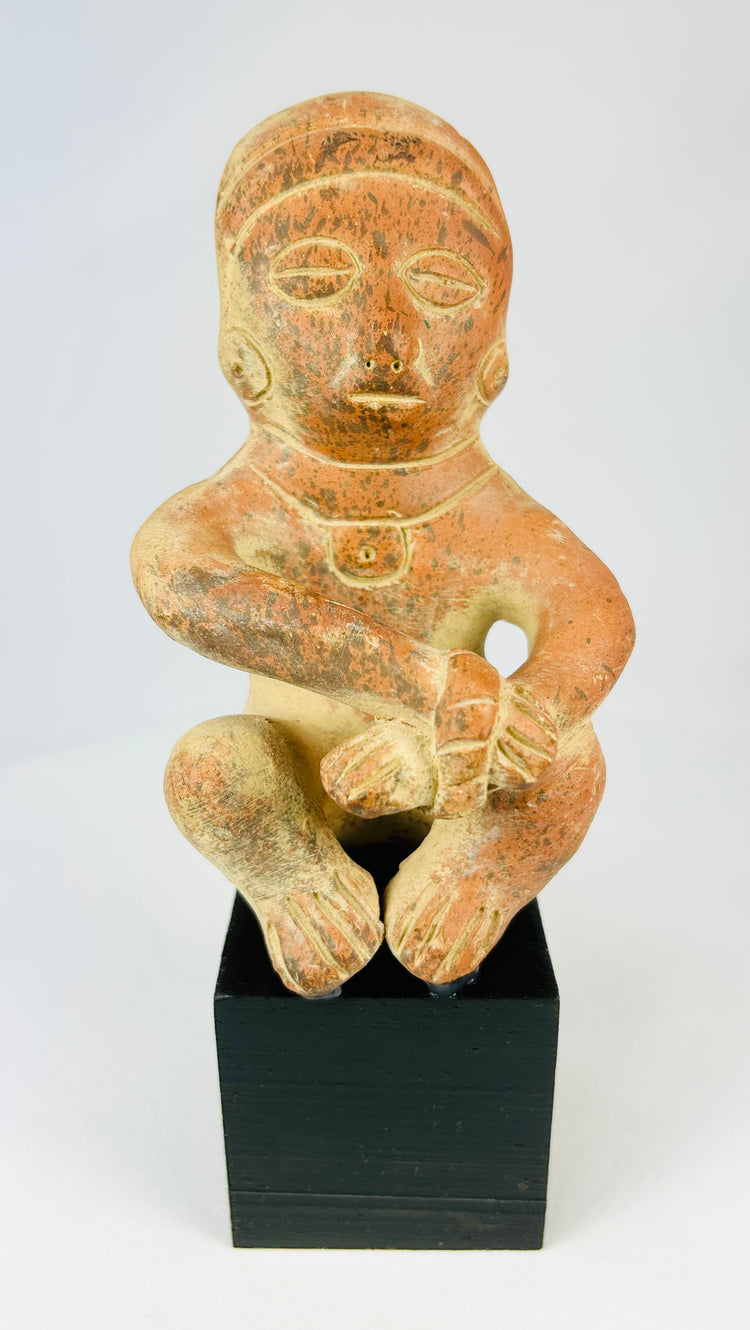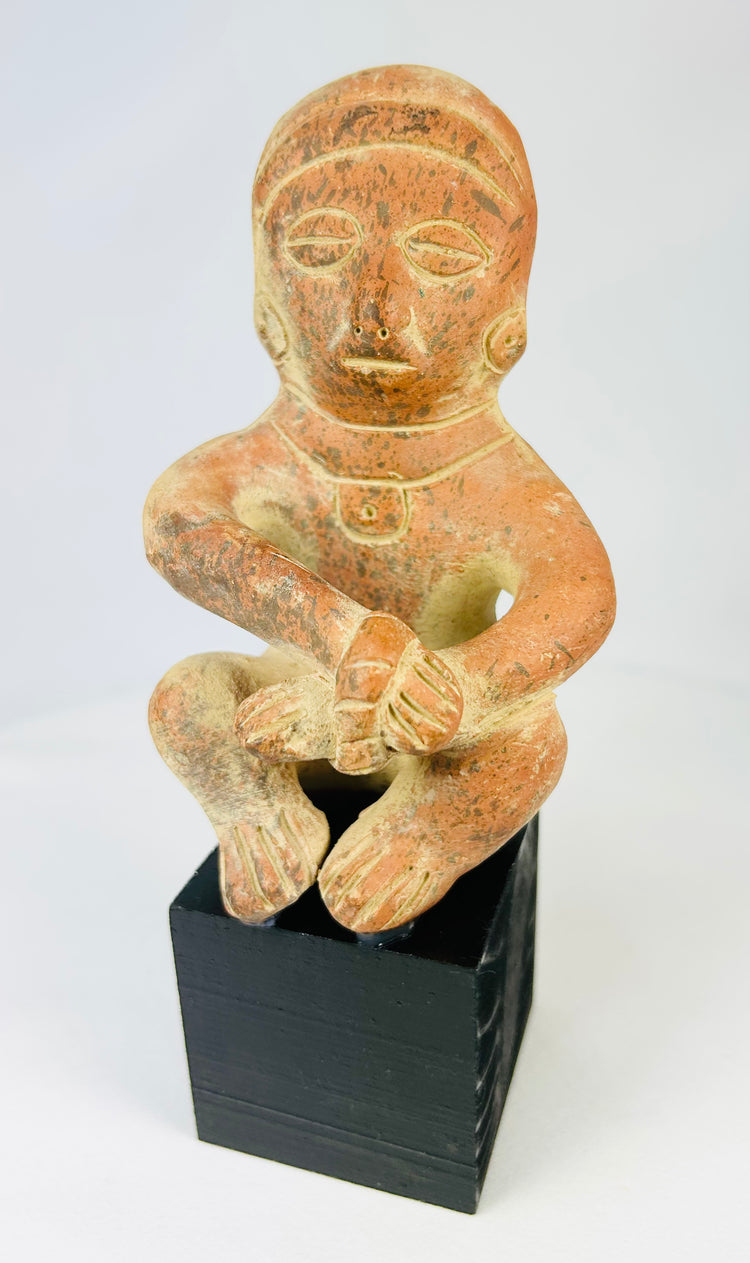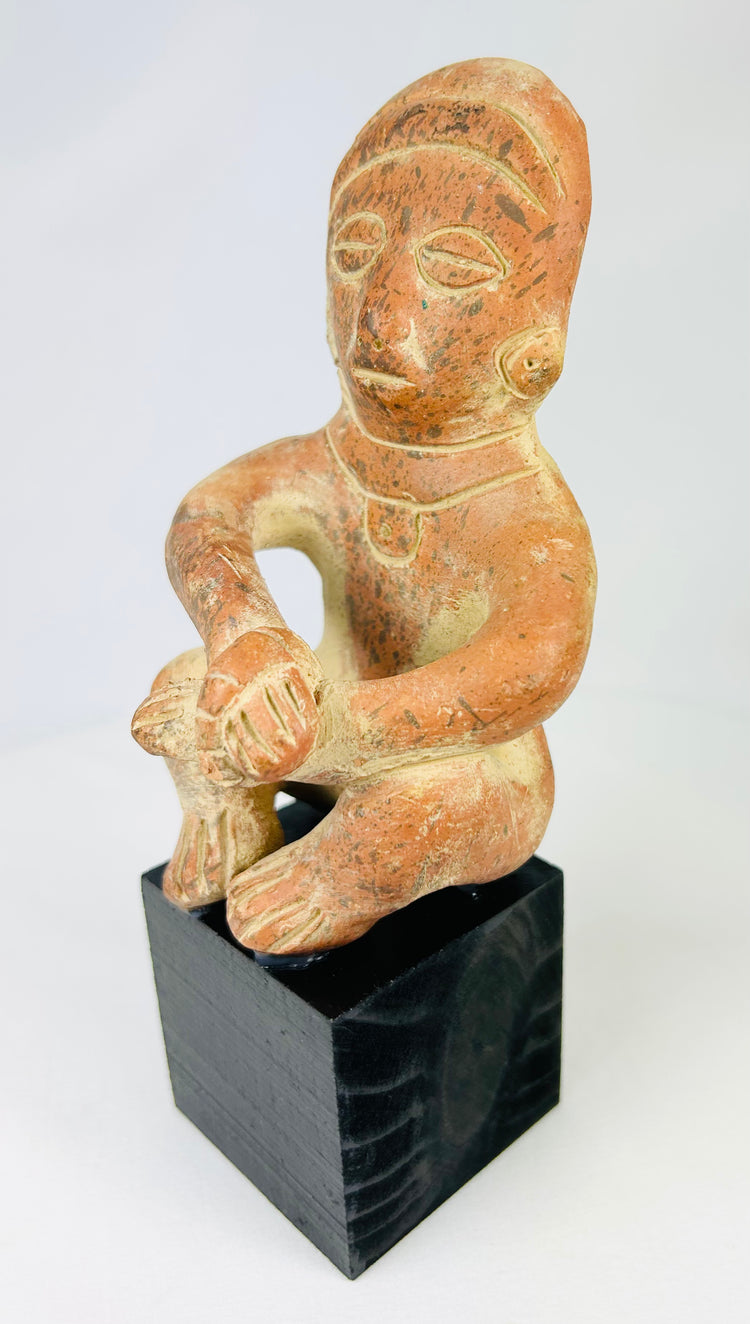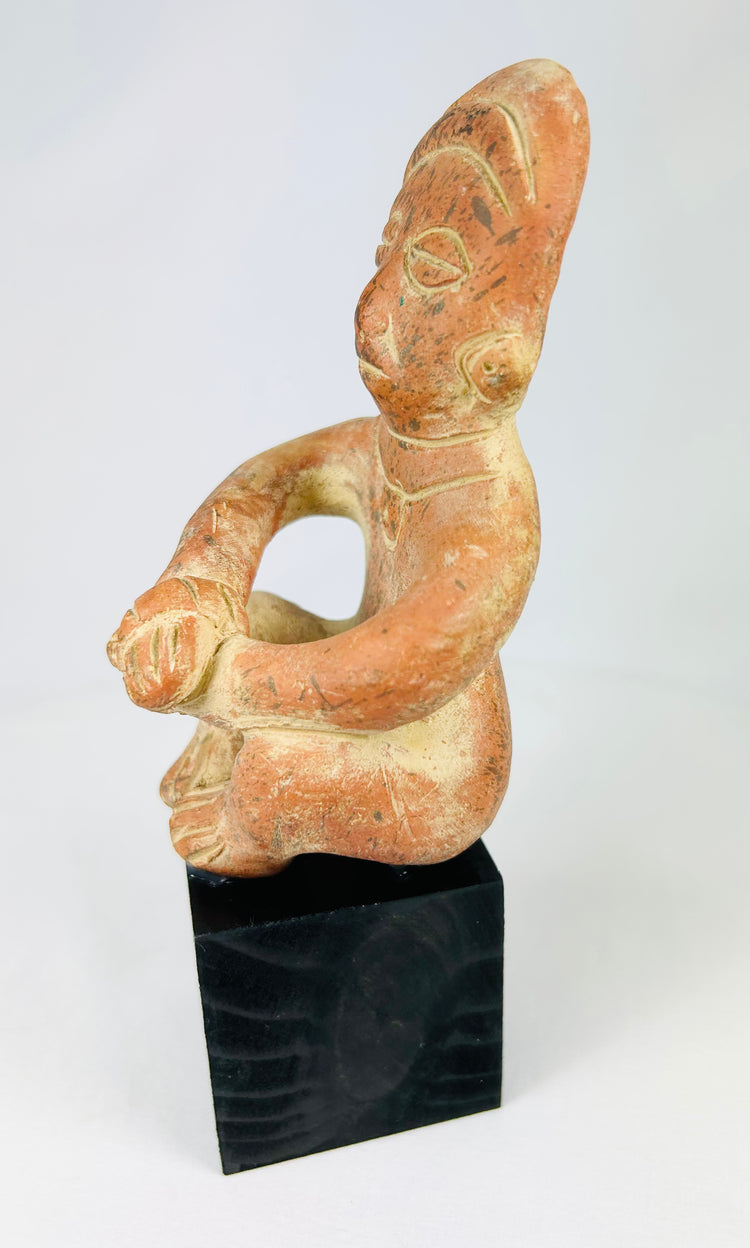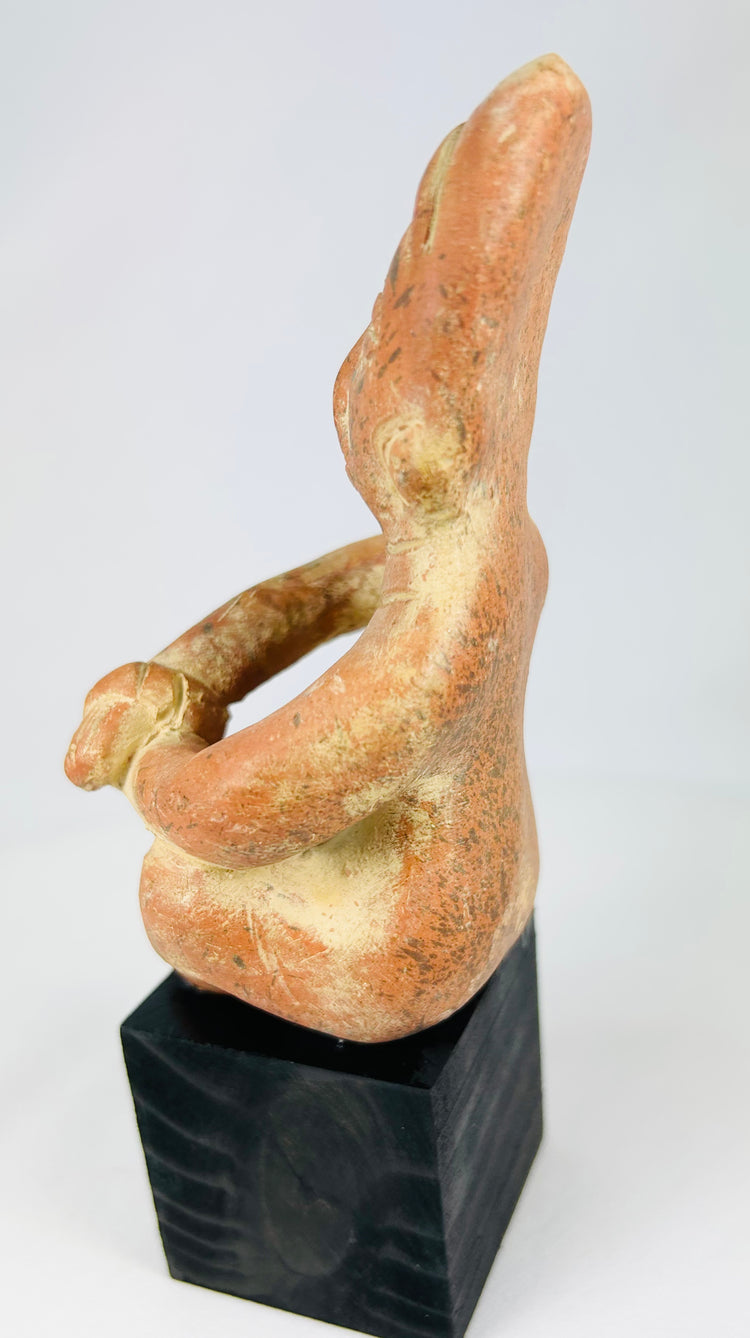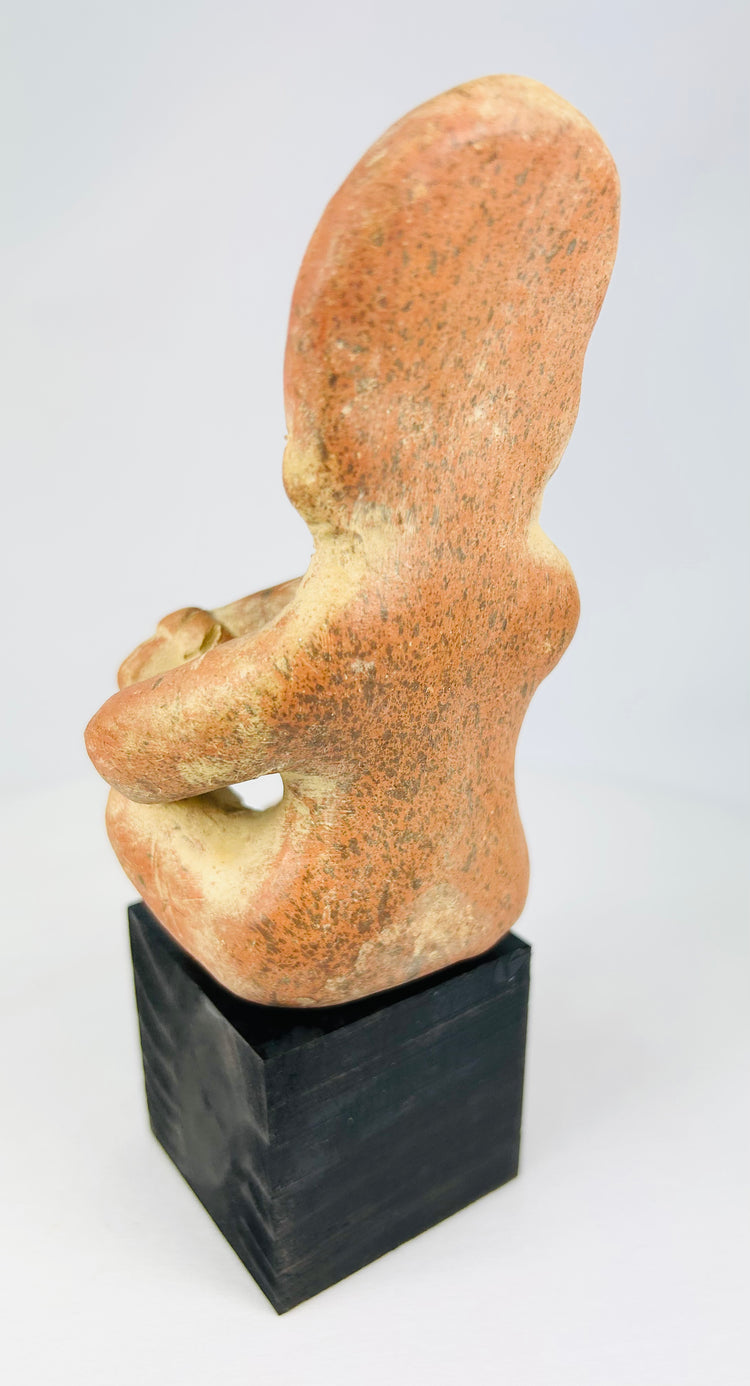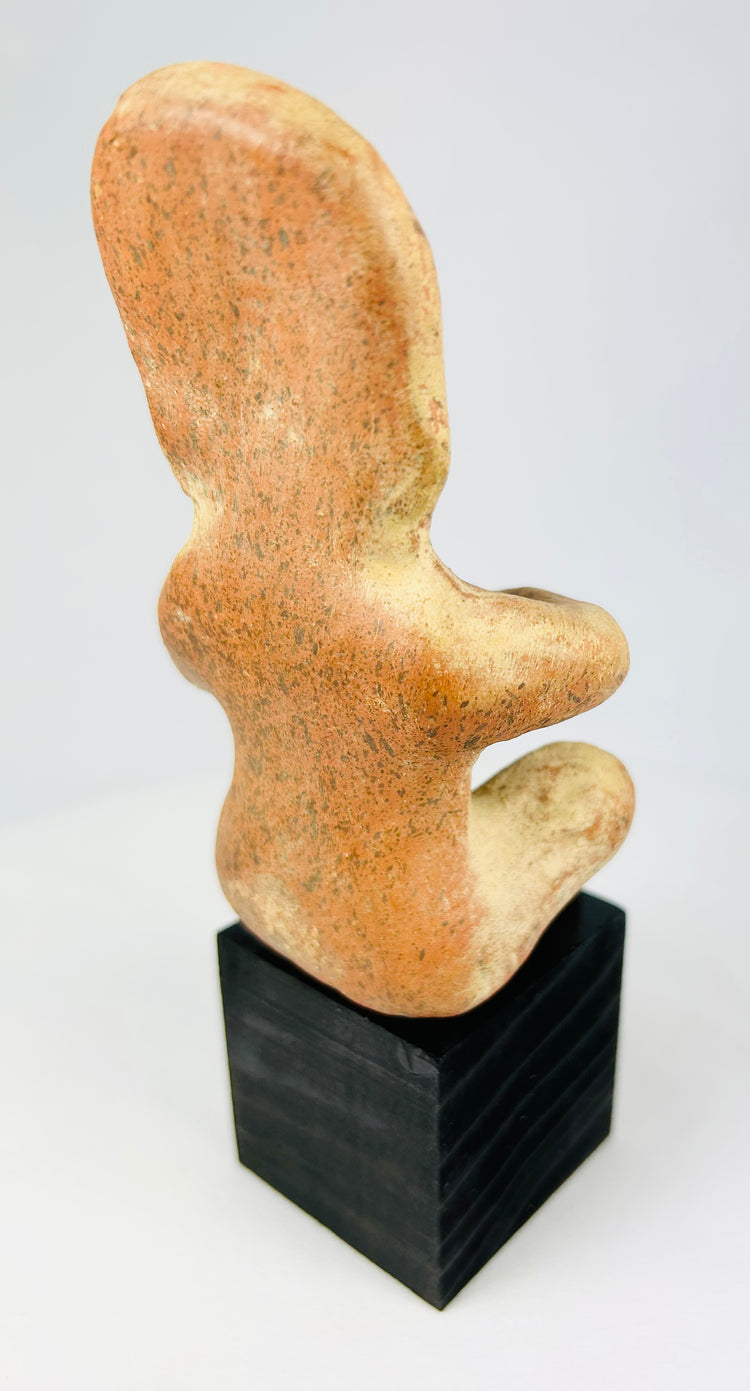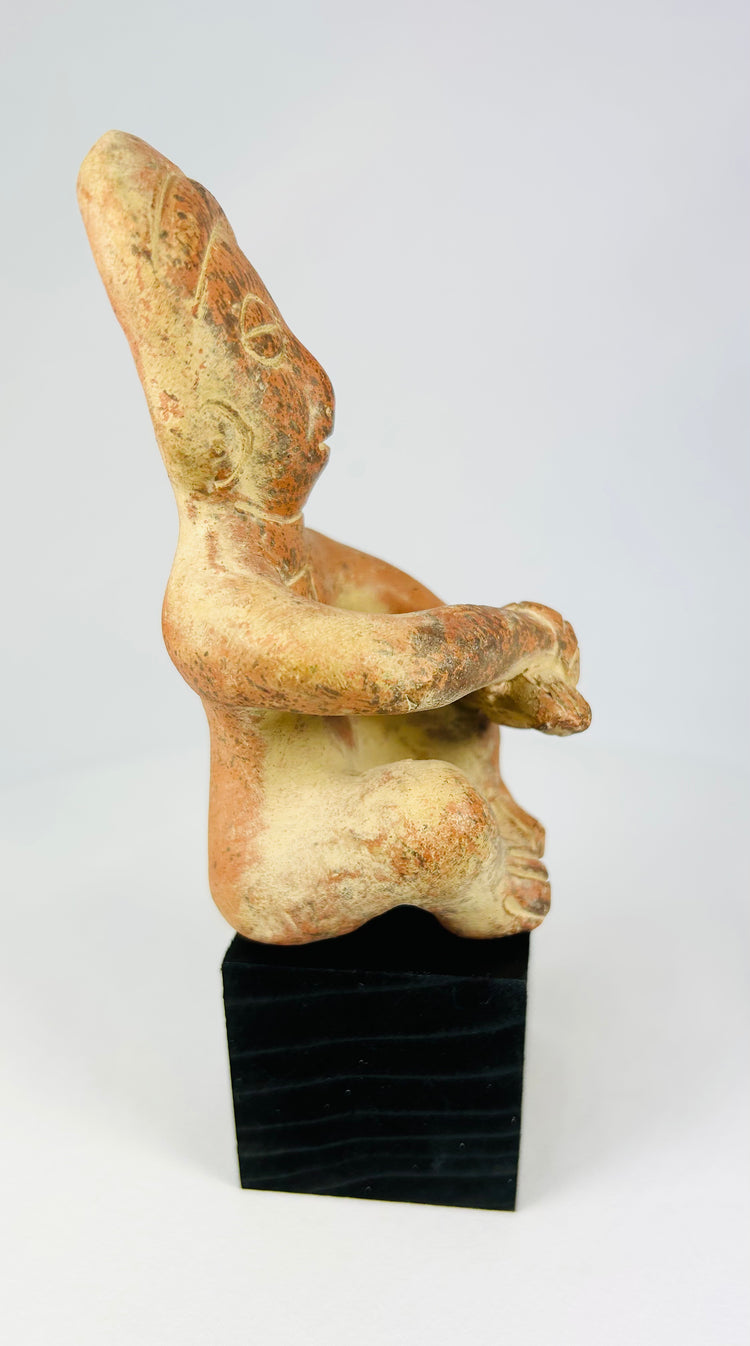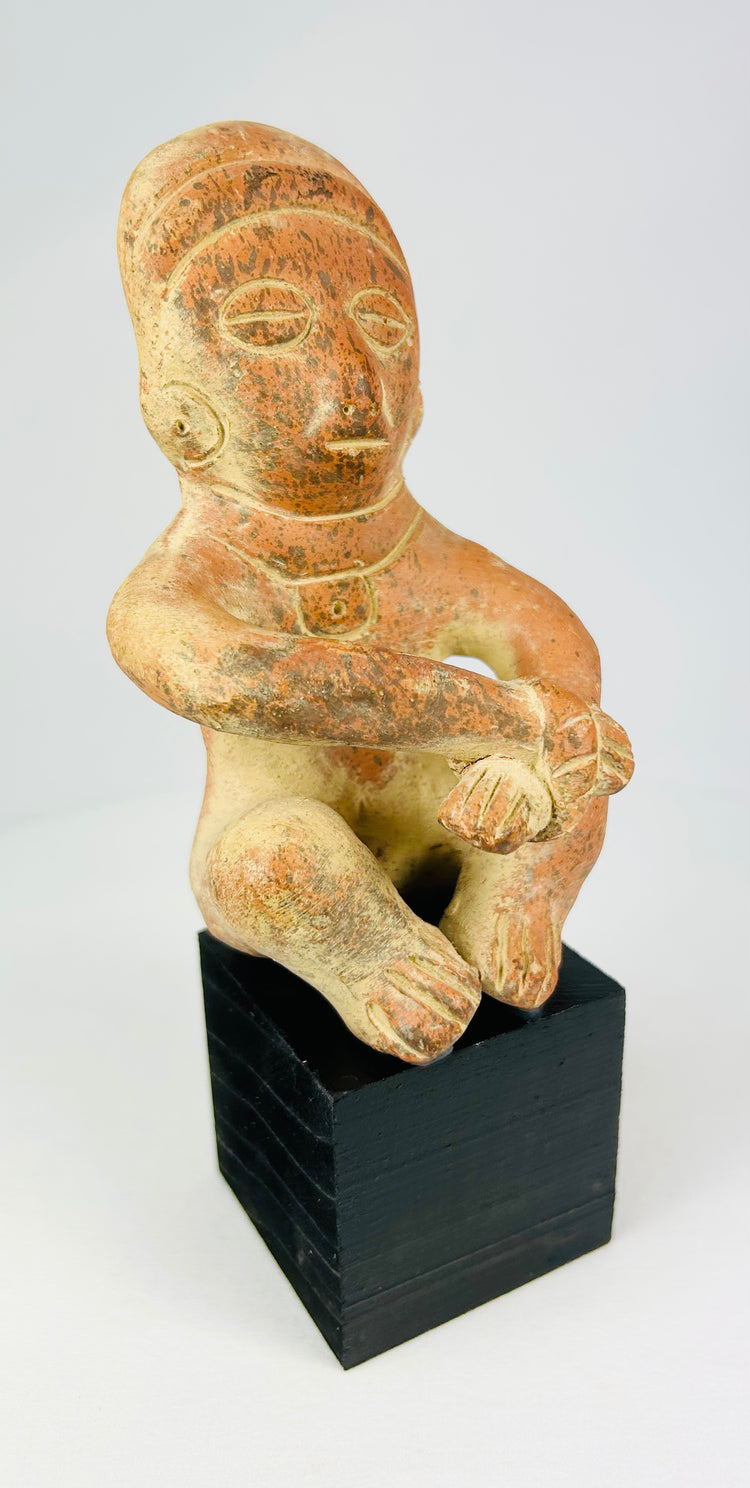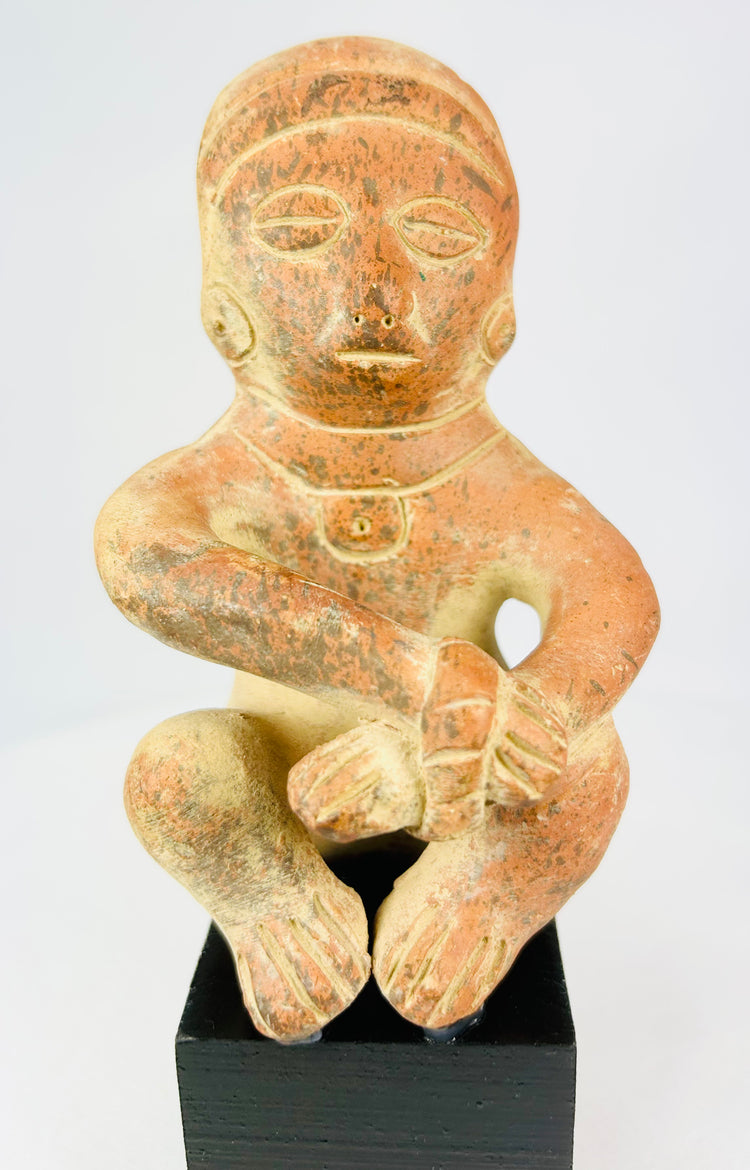Pre-Columbian Anthropomorphic Clay Sculpture | West Mexican Tradition | Circa 300 CE
Description
More
Less
Historical Context & Origin
Region: West Mexico (Nayarit or Jalisco)
Material: Hand-molded and burnished terracotta with red slip
Period: Pre-Columbian, circa 300 BCE–300 CE
Description
This evocative terracotta figure, seated with bent knees and slightly extended arms, exemplifies the artistry of the West Mexican shaft tomb tradition. The broad face and stylized features are carefully modeled, conveying both presence and stability. Traces of the original red slip remain visible across the surface, softly eroded from centuries of burial. Figures such as this were created as ritual companions for the deceased, placed within shaft tombs to act as guardians, ancestral effigies, or protective spirits. Mounted on a custom black museum stand, this example demonstrates both the expressive power and cultural depth of early Mesoamerican funerary art.
Features
- Seated anthropomorphic terracotta figure with modeled limbs
- Stylized facial features with incised details
- Traces of original red slip and surface burnishing
- Mounted on a custom black museum stand for stability and display
- Strong representation of shaft tomb tradition artistry
Cultural Significance
In West Mexican ritual culture, terracotta figures played a central role in funerary practice. Placed in shaft tombs, they served as guardians, companions, or ancestral representations to protect and guide the deceased into the afterlife. Their forms often emphasized fertility, vitality, and protective presence, symbolizing the enduring relationship between the living and their ancestors. As such, they provide invaluable insight into the beliefs, social structures, and ritual practices of early Mesoamerican societies.
Condition
Good archaeological condition with surface encrustations, mineral deposits, and expected slip losses consistent with age and burial. No evidence of modern overpainting. Stable and structurally sound, ready for display.
Dimensions (approximate)
Height: 7 in
Width: 2 in
Depth: 3 in
Age
Circa 300 BCE–300 CE
Description
Historical Context & Origin
Region: West Mexico (Nayarit or Jalisco)
Material: Hand-molded and burnished terracotta with red slip
Period: Pre-Columbian, circa 300 BCE–300 CE
Description
This evocative terracotta figure, seated with bent knees and slightly extended arms, exemplifies the artistry of the West Mexican shaft tomb tradition. The broad face and stylized features are carefully modeled, conveying both presence and stability. Traces of the original red slip remain visible across the surface, softly eroded from centuries of burial. Figures such as this were created as ritual companions for the deceased, placed within shaft tombs to act as guardians, ancestral effigies, or protective spirits. Mounted on a custom black museum stand, this example demonstrates both the expressive power and cultural depth of early Mesoamerican funerary art.
Features
- Seated anthropomorphic terracotta figure with modeled limbs
- Stylized facial features with incised details
- Traces of original red slip and surface burnishing
- Mounted on a custom black museum stand for stability and display
- Strong representation of shaft tomb tradition artistry
Cultural Significance
In West Mexican ritual culture, terracotta figures played a central role in funerary practice. Placed in shaft tombs, they served as guardians, companions, or ancestral representations to protect and guide the deceased into the afterlife. Their forms often emphasized fertility, vitality, and protective presence, symbolizing the enduring relationship between the living and their ancestors. As such, they provide invaluable insight into the beliefs, social structures, and ritual practices of early Mesoamerican societies.
Condition
Good archaeological condition with surface encrustations, mineral deposits, and expected slip losses consistent with age and burial. No evidence of modern overpainting. Stable and structurally sound, ready for display.
Dimensions (approximate)
Height: 7 in
Width: 2 in
Depth: 3 in
Age
Circa 300 BCE–300 CE
You May Also Like




























